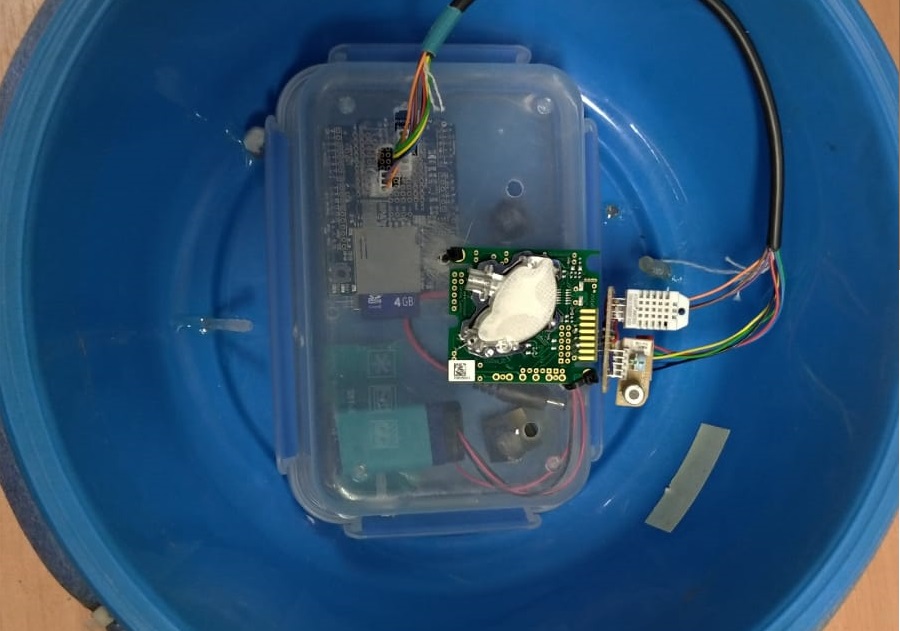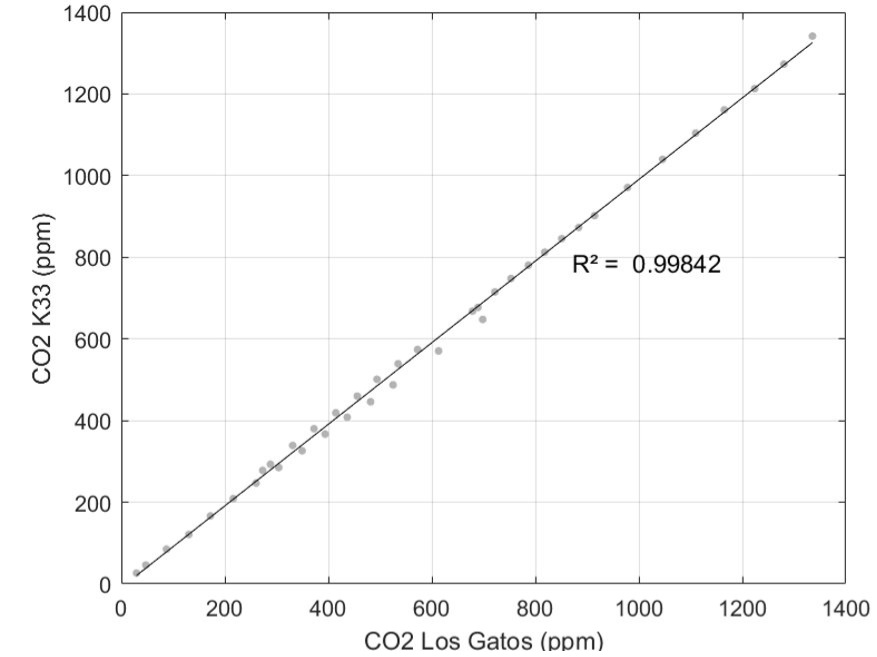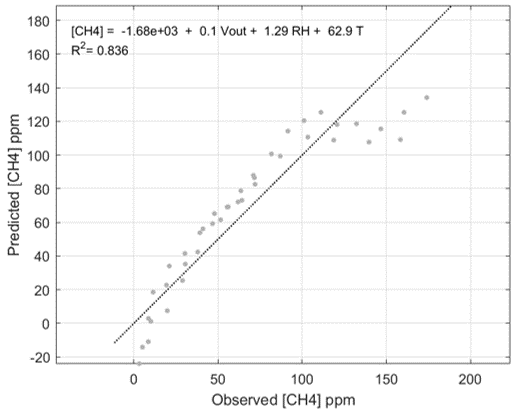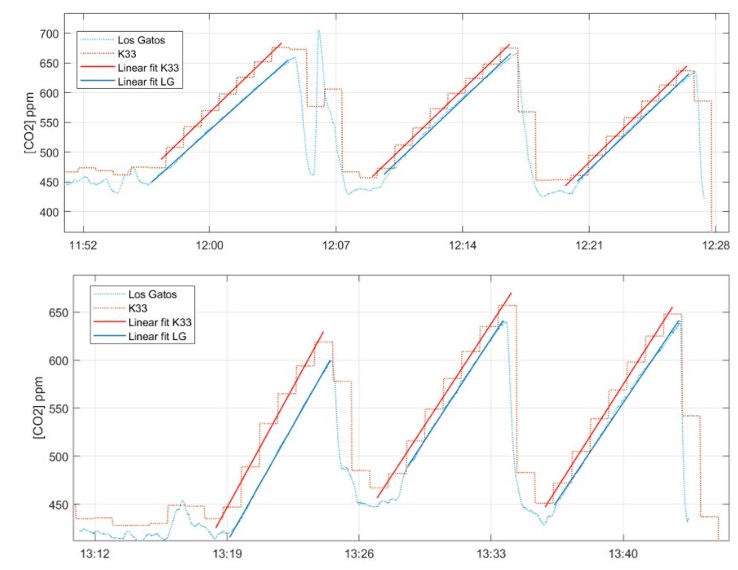Methane and carbon dioxe flux chambers

Environmental monitoring is an important issue to guarantee the continuous preservation of natural resources. Lakes, reservoirs, rivers are water bodies that emit massive quantities of greenhouse gasses. The monitoring procedure has helped to understand how these ecosystems contribute to greenhouse gasses emission. The main aspect of this research is to provide a continuous low-cost automatic module to measure methane and carbon dioxide concentration from water bodies (e.g. Bastiken et al., 2020; Biogeosciences and Lorke et al., 2015; Biogeosciences). Although this project is focused to create a module to measure these quantities emitted by water bodies, it can be easily adapted to measure methane and carbon dioxide fluxes in different ecosystems.
The automatic floating chamber was built to measure CO2 and CH4 concentrations. However, since system conditions may influence the sensor response, temperature and humidity have been also measured to improve sensor response ( Bastiken et al., 2020; Biogeosciences). We used a K33 ELG 10,000ppm CO2 to measure CO2, which also is capable to measure temperature and humidity. To have a higher frequency response, we also coupled a DHT11, which provides high-frequency temperature and humidity data. The CH4 sensor is a TGS 2611, semiconductor type gas sensor, which requires a complex calibration procedure for our applications.
The calibration was performed in a closed chamber, which was connected in a closed-loop with a gas analyzer (Los Gatos). The K33 ELG CO2 and the methane sensor were set to record data 1 minute time step and the injection were done in 5 minutes time step.
We performed four calibrations tests (Fig 2) with CO2 ranging from 131 to 1380 ppm and methane ranging from 0.6 to 186 ppm. The relative humidity during the calibration ranged from 14 % to 52 % and temperature from 23 °C to 25 °C.
The result (Fig 2) shows that the K33 ELG CO2 low-cost sensor is skilled to measure CO2 concentrations, with no need for a preliminar calibration or correction.
However, the TGS 2611 sensor, used to measure methane concentration, does not seems to be skilled to measure concentration of methane in natural condition, where concentration reaches a maximum of 10 ppm.


From calibration, we can see two major issue for using the TGS 2611 in applications that tries to measure methane emissions from lakes. The first one is the small concentration of methane (maximum of 10 ppm) released from lakes/reservoirs. Even though the calibration curve can describe a correlation, presenting correlation coefficient higher than 0.8 (Fig 3), clearly from our results there are superposition of curves, that vary from day to day. Since the TGS 2611 methane sensor opperates under the ADC protocol, their readings can be strongly affected by meteorological conditions (e.g. temperature, humidity, solar aradiation, etc). In addition to this, the small concentration in this kind of applications is in the order of sensor resolution, and probably higher than the sensor precision, limiting the aplication of TGS 2611 in this kind of measurements.
All the sensors were tested in the field campaign (stream). The chamber was connected in a closed-loop with the gas analyzer. We done 6 measurements. Two runs with 3 deployments, in which each deployment had a duration of 6 minutes. After each deployment the chamber was opned until the CH4 and CO2 concentrations were at background concentration.
The mean relative error of 3.25 % obtained from CO2 readings indicates that this can be easily applied to monitor natural concentration of CO2 realeased from lakes, river, and reservoirs. However, results from methane sensor does not seems to indicate that this sensor is skilled to monitor methane realease from natural water bodies. It still need further improvements to be used directly to monitor methane emissions from aquatic ecosystems.
As our next move will be testing a different methane sensor, that has a similar accuracy of this one used in this study, but the sensor is based on digital transmission, and should not be influenced easily by humidity changes.
